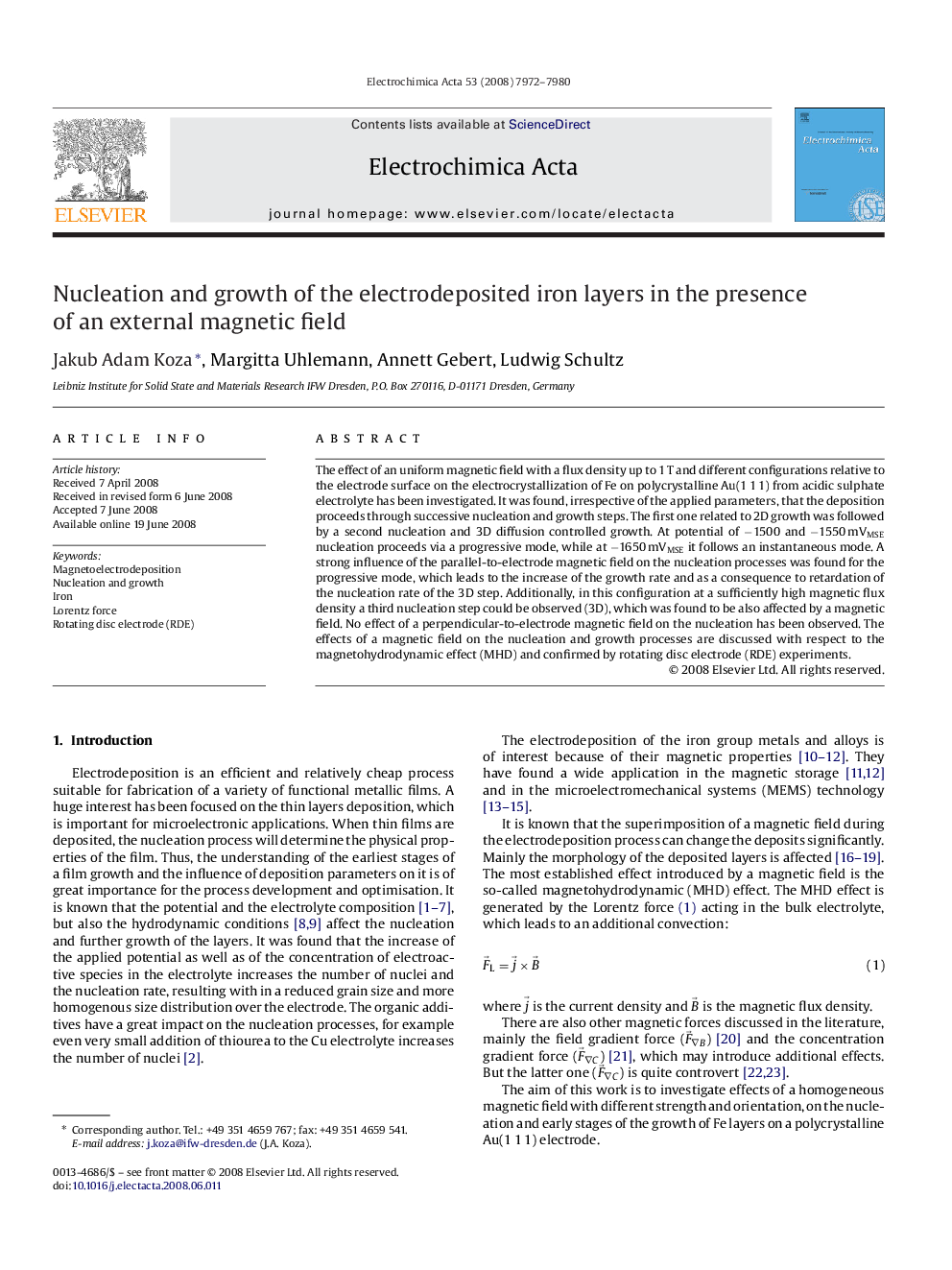| Article ID | Journal | Published Year | Pages | File Type |
|---|---|---|---|---|
| 194617 | Electrochimica Acta | 2008 | 9 Pages |
The effect of an uniform magnetic field with a flux density up to 1 T and different configurations relative to the electrode surface on the electrocrystallization of Fe on polycrystalline Au(1 1 1) from acidic sulphate electrolyte has been investigated. It was found, irrespective of the applied parameters, that the deposition proceeds through successive nucleation and growth steps. The first one related to 2D growth was followed by a second nucleation and 3D diffusion controlled growth. At potential of −1500 and −1550 mVMSE nucleation proceeds via a progressive mode, while at −1650 mVMSE it follows an instantaneous mode. A strong influence of the parallel-to-electrode magnetic field on the nucleation processes was found for the progressive mode, which leads to the increase of the growth rate and as a consequence to retardation of the nucleation rate of the 3D step. Additionally, in this configuration at a sufficiently high magnetic flux density a third nucleation step could be observed (3D), which was found to be also affected by a magnetic field. No effect of a perpendicular-to-electrode magnetic field on the nucleation has been observed. The effects of a magnetic field on the nucleation and growth processes are discussed with respect to the magnetohydrodynamic effect (MHD) and confirmed by rotating disc electrode (RDE) experiments.
